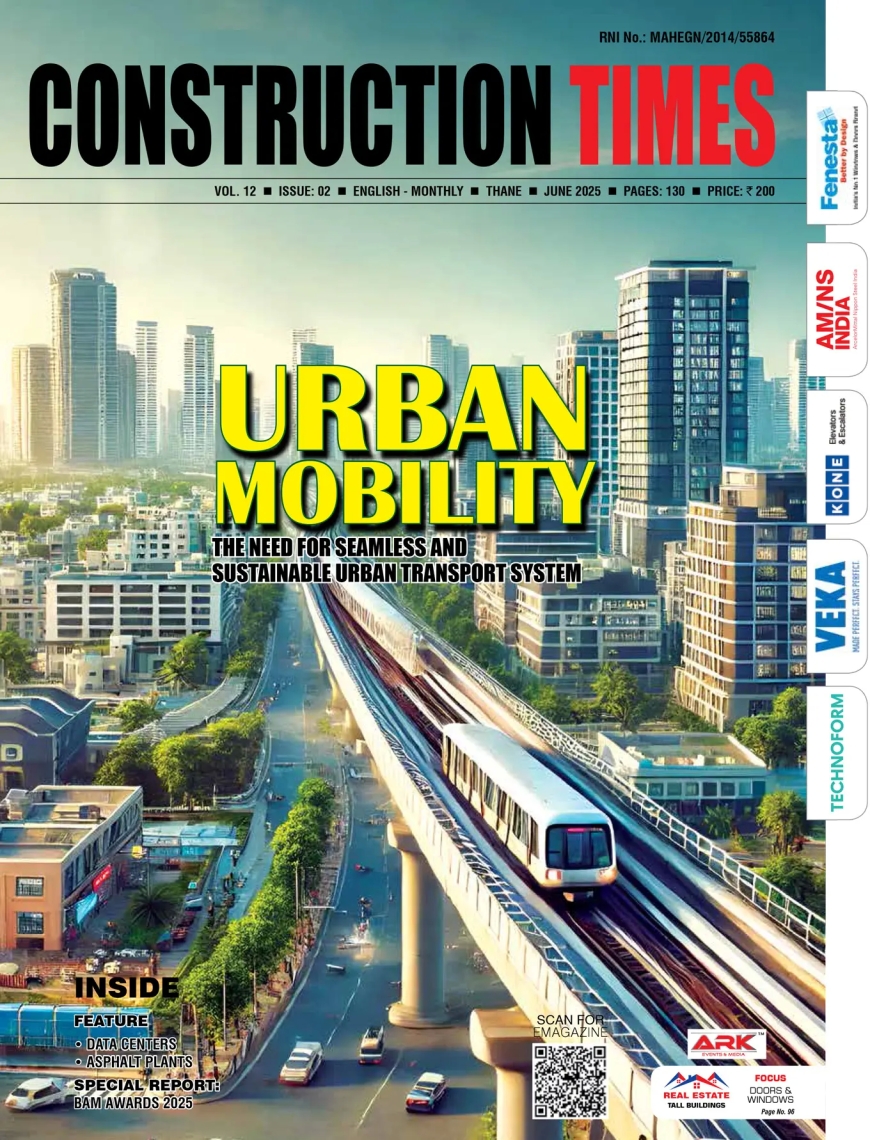GREEN BUILDING REVOLUTION: Transforming the construction landscape in India

The construction industry's ecological footprint has been a longstanding subject of focus globally. India, one of the leaders of the future of construction, is pushing a wave of positive change through its commitment to green buildings and eco-friendly product and material production.
The convergence of technological advancements and evolving regulatory frameworks is transforming traditional
building practices, paving the way for a sustainable construction landscape
in India. At the heart of this transformation
are the products used in construction. This article delves into the world of sustainable building materials in India, exploring certifications, guidelines and circular economy practices.
Green buildings for a green India
Green buildings in India conserved over 45 billion kWh of energy and 14 billion liters of water in 2022 alone while mitigating 40 million tonnes of greenhouse gas emissions. Sustainable materials likely played a
crucial role in this success. Eco-friendly options like gypsum board drywalls,
reclaimed wood, steel structures, and recycled materials like glass in fibrous glass mineral wool reduce environmental impact and
create healthier indoor spaces. Steel, in particular, stands out for its durability, recyclability, and energy efficiency.
Moreover, sustainable packaging using wooden delivery panels and recycling existing plastic reduces carbon footprint and landfill sizes.
Green certifications to differentiate products
To show commitment to being environmentally responsible and operating in a sustainable way, manufacturers get green product certifications, such as Forest Stewardship Council (FSC) certification. These certifications not only improve brand value but also help save money on energy bills and resources, and actively encourage reducing waste and pollution. Industry-leading construction companies emphasize Life Cycle Assessment (LCA), a quantitative and objective method to assess the environmental impact of products through its life, to make informed decisions on resource consumption, emissions reduction, and product performance optimization. This integrated approach promotes sustainable construction practices and contributes to a greener and more sustainable future.
GreenPro is a Type1 Ecolabel which enables the end users in the building sector and manufacturing industries to choose the right products, materials and technologies for reducing the environmental impacts during the construction, operation and maintenance of their buildings and factories.
An Environmental Product Declaration (EPD) transparently reports objective, comparable and third-party verified data about products and services' environmental performances from a lifecycle perspective.
Regulatory guidelines for manufacturing
In alignment with the United Nations' Sustainable Development Goals (SDGs), particularly Goal 11: Sustainable Cities and Communities, and Goal 13: Climate Action, India is embracing green constructions as a vital step towards a sustainable future. As India strives to achieve the UN's SDGs, a comprehensive approach to sustainable construction is necessary.
Regulations ensure compliance and accountability. To truly transform India's construction landscape, the focus must expand beyond tier-I cities, where green building concepts and green material providers have already gained traction, and prioritize tier-II and tier-III cities. Government and policymakers play a crucial role in driving this change by introducing targeted incentives, such as tax benefits for manufacturing green products and getting materials and technologies at subsidized rates.
Circular economy principles for a sustainable future
The circular economy is a system where materials are kept in circulation through processes like maintenance, reuse, refurbishment, remanufacture, recycling, and composting. This approach in constructing buildings is estimated to reduce CO2 emissions from materials used in the built environment by 38% by 2050.
The Circle House in Denmark is the first world’s first social housing project constructed according to circular principles. It has 90% of its building material able to be demounted and reused or resold without loss of value. The building project reduces its CO2 footprint by using alternatives to cement and concrete like cork and old newspapers for façades, eelgrass and granules for insulation and used car tyres for flooring underlay. “Gamle Mursten” is a large-scale cleantech production company that uses its patented cleaning technology to clean bricks, thereby saving more than 95% of the energy otherwise used to manufacture new bricks. By applying its method to two thousand bricks, the emission of one tonne of CO2 could be prevented. Realdania Byg and 3XN Architects used 300,000 old bricks to make the Castle of Hindsgavl hotel, saving the environment of 150 tons CO2.
By integrating green practices throughout the construction process, we can actively build a future where sustainability and efficiency go hand-in-hand. This holistic approach would not only minimize environmental impact but also enhance cost-effectiveness and streamline the construction processes. With unwavering dedication to innovation, sustainability, and excellence, we're committed to building a better tomorrow, where every construction is both durable and upholds the well-being of our planet.

Sumit Bidani
CEO, Knauf India Pvt Ltd







